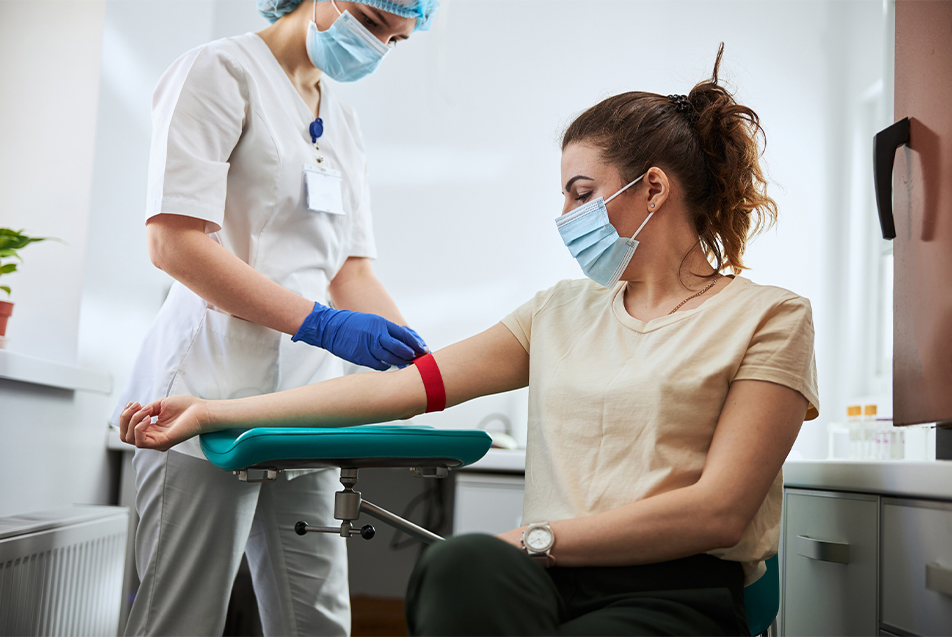
According to their website, The Red Cross is experiencing the worst blood shortage in over a decade. While this affects everyone, it has a particularly severe impact on those actively receiving treatment for cancer. Matthew Bartock, DO, hematologist, Parkview Cancer Institute, explains why this patient population needs others to consider becoming a blood donor.
Why might a cancer patient need a blood transfusion?
There are numerous causes of low blood counts in our cancer patient population, including:
- Chemotherapy, which can slow down the production of blood cells including red cells, platelets and white cells.
- Radiation therapy, which is more commonly utilized in solid tumors but occasionally used with lymphomas or prior to bone marrow transplant, which can also slow down production of blood cells.
- Other causes of anemia, or low red blood cells, such as nutritional deficiency, destruction of blood cells inside our bodies, blood loss from trauma or surgery, inherited genetic mutations that prevent formation of healthy red blood cells, and immune system factors, which can decrease production of red cells.
How prevalent is the need?
The American Red Cross estimates that cancer patients utilize approximately 25% of the nation's blood supply. Transfusion need varies related to the age of the patient, type of cancer, invasiveness of surgeries, disease burden and co-morbid conditions, including liver or kidney disease.
What is the role of bone marrow and what happens if it is damaged?
The bone marrow is a dense network found in the center of our bones where our blood cells are made. This is the home of stem cells, which have the capability to divide and mature into different blood cells including white blood cells that help create our immune system and fight bacteria, red blood cells which carry oxygen so we have energy, and platelets which help us to stop bleeding.
If the bone marrow is damaged by chemotherapy, radiation therapy, or is overrun by cancer, it will cause decreased blood counts. Blood counts can remain low several weeks after therapy and may take even longer to completely normalize. If the damage to bone marrow and our stem cells is severe or if there is scarring of the bone marrow, low blood counts may be permanent.
Are there specific cancers that might cause a person to require blood more than other cancers?
Blood and platelet transfusions are most commonly utilized in acute leukemias, some lymphomas and bone marrow transplant patients, however, it can be necessary for patients with any cancer type. It’s not uncommon that patients receiving high doses of chemotherapy require red blood cell and platelet transfusions several days a week when therapy is most toxic.
Are there particular blood types that are most needed for cancer patients?
Type O is the most common blood type, which is found in approximately 40% of the U.S. population. Type O blood is a universal donor, meaning it can be received by any of the blood types: A, B, AB or O. There is a complex system in place, with other variables that may need matched to avoid reactions including fevers, chills, shortness of breath and destruction of red cells. In a non-emergent situation, blood cells are typically matched as closely as possible between donors and recipients.
Patients who require multiple transfusions, or some patients who are diagnosed with leukemia or lymphoma, require extra special precautions in hopes of avoiding the production of antibodies. Antibodies to blood cells can cause decreased response rates to transfusions. Also, antibodies to blood cells can make bone marrow transplants difficult with increased chances of rejection and reaction.
How has Parkview Cancer Institute been able to navigate the current national blood crisis?
A normal hemoglobin for a woman is 12-15.5 g/dL and for a man it is 13-16.5 g/dL. As blood levels decline, physicians consider blood transfusions when hemoglobin levels are less than 7.0g/dL. As we are currently in a national blood crisis, we have adapted a slightly lower transfusion threshold of 6.0 g/dL. A single blood transfusion should produce a response of a 1 g/dL increase in hemoglobin.
We commonly check nutritional studies for folic acid, vitamin B-12 and iron, replacing these aggressively if they are low. Another approach we have been utilizing in select patients is erythropoiesis-stimulating agents. These agents contain a hormone produced by the kidneys that stimulates the bone marrow to make more red blood cells.
If you would like to learn more about how you can help others by becoming a blood donor, visit redcrossblood.org.



